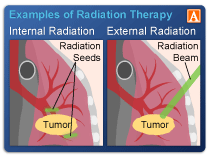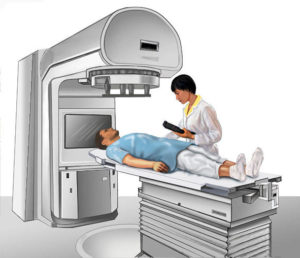
Diagnosed with Cancer? Your two greatest challenges are understanding cancer and understanding possible side effects from chemo and radiation. Knowledge is Power!
Learn about conventional, complementary, and integrative therapies.
Dealing with treatment side effects? Learn about evidence-based therapies to alleviate your symptoms.
Click the orange button to the right to learn more.
Cancer from CT Scans…

The risk of blood cancer from CT scans is small unless you are one of the people who are diagnosed with a blood cancer from a CT scan…
The point of this blog post is to educate the reader about lifetime risks of cancer from ionizing radiation. Full disclosure: I am a long-term cancer survivor who has been:
- x-ray, PET, CT, scanned many times-
- got sunburned too many times-
- received an autologous stem cell aka high-dose chemotherapy-
- traveled by air on occasion-
- and is paranoid about ionizing radiation-
Its easy to lament “I wish I knew then what I know now…” I think I would have made the same bad decisions as a teen for example. As a cancer patient however, I think I could have worked with my medical team to reduce the amount of radiation I was exposed to.
In addition, I would have undergone evidence-based, non-conventional therapies shown to reduce ionizing radiation such as:
Why is ionizing radiation a problem?
Radiation is cumulative in the human body. Every time a human being is exposed to radiation, his/her risk of cancer increases. The challenge is to figure out your lifetime risk.
Ionizing radiation is present in various forms in our environment, and people are exposed to it from both natural and human-made sources. Here are some typical sources of ionizing radiation for the average person throughout their life:
- Background Radiation: This is the ionizing radiation that is always present in the environment. It comes from cosmic rays from outer space and naturally occurring radioactive materials in the Earth, such as uranium, thorium, and radon.
- Radon Gas: Radon is a radioactive gas that results from the decay of uranium in the soil. It can accumulate in buildings, especially in areas with certain geological characteristics. Inhalation of radon is a significant source of radiation exposure for some individuals.
- Medical Procedures: Diagnostic medical procedures, such as X-rays and CT scans, expose individuals to ionizing radiation. While these procedures are essential for medical diagnosis and treatment, repeated or unnecessary exposures can contribute to cumulative radiation doses.
- Dental X-rays: Dental X-rays contribute to the radiation exposure of individuals during routine dental check-ups and procedures.
- Consumer Products: Some consumer products contain radioactive materials. For example, certain types of granite countertops, ceramics, and antique glass may contain radioactive elements.
- Nuclear Medicine: Certain medical procedures use radioactive substances for imaging and treatment purposes. These can contribute to an individual’s radiation exposure.
- Air Travel: Cosmic rays from the sun and outer space increase at higher altitudes. As a result, people who frequently travel by air may receive slightly higher doses of ionizing radiation.
It’s important to note that while exposure to ionizing radiation is a part of everyday life, regulatory agencies set limits to ensure that exposure levels are within safe ranges. The health risks associated with ionizing radiation depend on factors such as the dose received, the type of radiation, and the duration of exposure. Medical professionals carefully consider these factors when prescribing diagnostic or therapeutic procedures involving ionizing radiation.
I have not been diagnosed with a therapy-induced cancer (blood or solid) since my original diagnosis in early 1994. I work at remaining cancer-free. I asked my dentist not to x-ray my teeth years ago. My dentist listened to me and does not give me a hard time about my thinking. I do think I risk some sort of hidden cavity but as I say, I’m paranoid about radiation so…
As of the writing of this post, I am almost 30 years post ionizing radiation- diagnostic scans, radiation therapy, etc. As I said above, radiation is cumulative. The adolescents in the study lined and excerpted below were only followed for a few years.
In my mind, the real issue is their lifetime risk of a treatment-related cancer. If I come across a study that looks at decades of radiation risk, I will blog about that study.
Are you a cancer patient or survivor? If you would like to learn more about ionizing radiation let me know-
David.PeopleBeatingCancer@gmail.com
Thank you,
David Emerson
- Cancer Survivor
- Cancer Coach
- Director PeopleBeatingCancer
Study Confirms Small Blood Cancer Risk From CT Scans
“New research strengthens the body of evidence demonstrating an increased risk of blood cancer from exposure to low doses of radiation from CT scans.
The results suggest that for every 10,000 children examined with an average low dose of 8 milligray (mGy), one to two will likely develop a hematological malignancy related to radiation exposure over the next 12 years.
The findings, published online November 9 in Nature Medicine, are based on more than 1.3 million CT scans in nearly 900,000 people younger than 22 years old when scanned…
Exposure to moderate- (≥ 100 mGy) to high-dose (≥ 1 Gy) ionizing radiation is a well-established risk factor for leukemia in both children and adults. However, the risk associated with low-dose exposure (< 100 mGy) typically associated with diagnostic CT exams in children and teens remains unclear…
The current study, coordinated by the International Agency for Research on Cancer, aimed to improve direct estimates of cancer risk from low-dose radiation exposure from CT scans performed in childhood and adolescence. The researchers estimated radiation doses to the active bone marrow based on
- body part scanned,
- patient characteristics,
- time period, and
- inferred CT technical parameters.
The analysis included 876,771 young people who underwent roughly 1.3 million CT scans overall.
A total of 790 hematological malignancies, including lymphoid and myeloid malignancies, were identified during follow-up. More than half (51%) of the cases were diagnosed in people under age 20 and 88.5% were diagnosed in people under age 30 years…
The excess relative risk for hematological malignancies increased as the number of CT exams increased — with risk rising by 43% per exam…”


